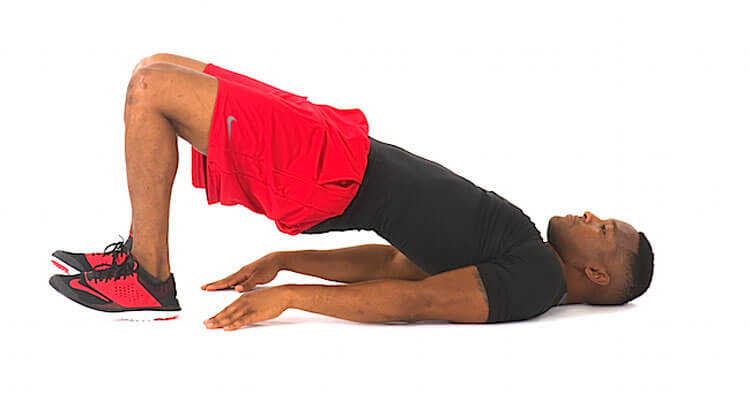Muscle Pain and Tendinopathy, Sports Injuries and Management
Causes And Management Of Trochanteric Bursitis
What Are The Causes Of Trochanteric Bursitis
Trochanteric Bursitis can be the result of both local trauma, or tissue overload. Overload may occur where the trochanteric bursa becomes inflamed through soft tissues repetitively “rubbing” over the bursa. This rubbing, friction can over time lead to irritation of the bursae. Hip bursitis as mentioned can also be the result of a traumatic incident, the result of a fall or a impact contusion. An example of this could be a fall off a push bike where the individual lands on their side impacting the bursa at the side of the hip. The The more common cause of trochanteric bursitis is that of gradual onset, commonly from a repetitive load to the bursa associated with activities such as walking, running or cycling. Repetitive overload is more likely in walkers, runners and cyclists if these activities are performed with poor muscle control, technique or improper equipment.
Hip bursitis is often associated with:
- Weak hip muscles
- Osteoarthritis (degenerative joint disease) of the hips and rheumatoid arthritis
- Calcium deposition in the gluteal tendons
- Leg length discrepancies
Diagnosing Trochanteric Bursitis
Diagnosis is usually based on clinical evaluation. At Sydney Physio Clinic after taking a medical history, including a history of the complaint your physio will perform a physical examination of your hip, pelvis, feet and spine, including any other areas they may consider relevant in your situation. Common findings relate to a history of pain and tenderness at the outside of the hip directly over the bursa, where the tenderness with applied pressure at the site of the bursa may be quite exquisite.
The use of ultrasound imaging and MRI can help confirm diagnosis, as well as ruling out of other conditions that could cause a similar presentation. X-ray of the hip can highlight any areas of calcium deposits in neighboring tendons as well as indications of osteoarthritis and again are sometimes used in the management of hip bursitis complaints, however as previously mentioned diagnosis is typically a clinical one, without the need for investigations.
Treatment For Hip Bursitis
The initial goal of treatment is to first avoid further irritation and reduce pain and inflammation. At this early stage the avoidance of aggravating activities and use of remedies to reduce inflammation can often be beneficial. Persisting with, or returning to aggravating activities prior to the pain settling may cause the symptoms to fail to settle or easily flare up again. Which is why frequently some form of activity modification is necessary in managing bursitis.
Physiotherapy is often used in both the acute early stages and chronic ongoing management of trochanteric bursitis. Physiotherapists along side aiming to settle the pain will commonly aim to addressing any perceived stability and biomechanics issues of hip and lower limb. With the goal of ensuring there is balanced support around the hip joint, helping create an environment where activity doesn’t irritate the bursa. Physiotherapists may also look at releasing tight structures around the hip such as the hip rotator muscles and the ITB, including muscles feeding into the ITB, doing so can reduce compression from these tissues exerted on the trochanteric bursa.
Physiotherapy And Hip Bursa Treatment Can Commonly Include:
- Ice: Regular application of ice packs can help to reduce pain and swelling if present.
- Non-steroidal anti-inflammatory medications (NSAIDs): NSAIDs like ice can help reduce pain, swelling and inflammation associated with hip bursitis.
- Aspiration: Occasionally if the bursa is significantly swollen aspirating (draining) the bursa may be recommended, not a treatment approach commonly used in hip bursitis unless a significantly enlarged traumatic bursitis.
- Corticosteroid injections: With persistent, or severe symptoms a cortisone injection may be recommended. Similar to the use of NSAIDs a targeted cortisone injection is aimed at reducing the inflammation in that area.
- Surgery: Although not a common path, sometimes surgical procedures such as a bursectomy, the removal of the bursa, iliotibial band release, tendon repair, or Osteotomy of the greater trochanter are considered for chronic conditions not responding to more conservative treatment.
- Physiotherapy: Physiotherapy treatment makes up part of any good rehabilitation and preventative program for hip bursitis and is regularly used in combination to any of the above mentioned approaches.
Prognosis And Prevention Of Trochanteric Bursitis
Some individuals with hip bursitis respond quickly and symptoms settle within a few weeks. In more chronic cases where tendinopathy of gluteal muscles coexists these patients may have their symptoms persist for several months.
- Good biomechanics and hip muscle control gained though the guidance of a physiotherapist, exercise physiologist, podiatrist, personal trainer, or similarly skilled practitioner is a solid rehabilitation and prevention strategy. Addressing postural control, strength and endurance of hip muscles is often necessary to promote settling of symptoms and avoid any recurrence of hip bursitis.
- Appropriate footwear for foot type and chosen activities can also play a role in reducing symptoms and act as a potential preventative measure.
- Weight management, losing weight as appropriate can help to minimize excess stress, alleviating pressure on the bursa.
Disclaimer: Sydney Physio Clinic provides this information as an educational service and is not intended to serve as medical advice. Anyone seeking specific advice or assistance on Causes And Management Of Trochanteric Bursitis should consult his or her physiotherapist, general practitioner or sports medicine specialist.


